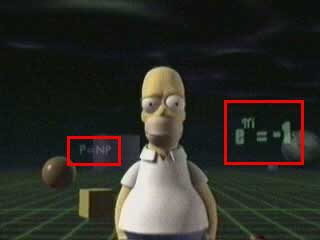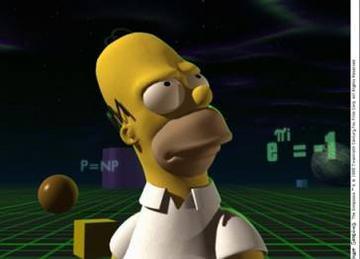P vs. NPThe Clay Mathematics Institute posted the prizes for seven damn-near insoluble math problems back in 2000.
The first of the Millennium questions to be solved, Poincaré's Conjecture, was proved in 2006. In 2010 the Institute announced that Dr. Grigoriy Perelman had indeed resolved the Conjecture. It was a big deal in Topology circles.
Perelman turned down the money and went back to his office.
Next up, one of the most difficult unanswered problems in Computer Sciences P vs. NP which will probably take a quantum computer to solve.*
I've mentioned that one of our interests are screaming fast computers. Quantum Computing is one approach to get there. Thanks to a reader for the heads-up on D-Wave.
First up, Reuters, October 4:
Quantum computing firm D-Wave gets $30 mln investment
* Canadian company D-Wave lands $30 million investment
* Firm says technology has applications for drug development, security
* Debate continues over what defines quantum computing
D-Wave Systems, a Vancouver-based company that aims to develop quantum-computing applications, said on Thursday it had received $30 million in funding from investors including the firm that manages Amazon founder Jeff Bezos's venture investments and an investment arm of the Central Intelligence Agency.
The investments, from Bezos Expeditions and In-Q-Tel, mark a vote of confidence in the potential for practical applications for the emerging technology underpinning quantum computing.
Advocates say the controversial technology works orders of magnitude faster than classical computing and has the potential to revolutionize fields such as drug development. It has remained mainly an academic concept since its introduction 30 years ago, but investors see new commercial opportunities.
Last year, D-Wave sold a $10 million superconducting-based quantum computer to Lockheed Martin, which installed it at the University of Southern California. This year, it hopes to sell a much more powerful version.
It is also marketing its own quantum-computing capability to other companies, which can tap into D-Wave's facilities using cloud computing, or remote servers. D-Wave chief executive Vern Brownell describes it as infrastructure-as-a-service, adding the company inked its first contract in the area a few weeks ago.
Next Big Future has been following the company pretty closely, also Oct. 4:
The company's technology is controversial in the scientific community, in part because D-Wave places a premium on working at large-scale rather than perfect error correction.
Some scientists question whether it is quantum computing at all, but D-Wave Brownell dismisses the skeptics.
"It's very simple to determine if you've built a quantum computer or not," he says. "If your machine is running a quantum algorithm - that is, a problem solving a procedure forbidden by the laws of classical physics but permitted by quantum mechanics - it's a quantum computer." ...MORE
Technology Review - Bezos and In-Q-Tel (CIA Investment arm) are in a group of investors who are betting $30 million on DWave Systems If the bet works out, some of the world's thorniest computing problems, such as the hunt for new drugs or efforts to build artificial intelligence, would become dramatically less challenging....Finally Daily Tech has some pretty good backround.
...The Technology Review article plays up the criticism that DWave received and says that DWave Systems has been publicly quiet.
Nextbigfuture has had 40 articles on Dwave systems and over 80 articles on Adiabatic Quantum Computing. The criticism was wrong and was made without taking the time to understand what DWave was doing. DWAve has continued to make many important developments and announcements. The later work received less attention than the initial coverage. Although IEEE Spectrum and Technology Review have had articles covering Dwave in the intervening years....MUCH MORE
*Back to P=NP, here is famed mathematician Homer Simpson in some outtakes of Treehouse of Horror VI, original airdate October 29, 1995, attempting to solve the problem:


